Choosing a minimalist lifestyle doesn’t mean parting ways with furry family members. While compact spaces demand creativity, animal companions can flourish in small homes with intentional design and routines, especially for those embracing tiny house living with pets. The key lies in balancing their needs with your spatial limitations—a challenge that rewards careful preparation.
Compact living requires reimagining traditional pet care. Clutter-free zones, vertical spaces, and multi-functional furniture become critical for maintaining harmony in tiny house living with pets. Every square foot must serve a purpose, whether it’s a cozy nook for naps or easy-access storage for toys and supplies.
Animal personalities play a big role in this transition. High-energy breeds might struggle without outdoor access, while calm temperaments often adjust smoothly. Proximity in tight quarters strengthens bonds but also demands clear boundaries to prevent stress.
Table of Contents
Key Takeaways
- Creative space planning helps pets thrive in compact environments
- Vertical designs and dual-purpose furniture maximize functionality
- Animal energy levels impact adaptation success
- Consistent routines maintain comfort in limited spaces
- Outdoor access enhances quality of life for active breeds
- Smart storage solutions keep essentials organized and accessible
Overview of Tiny House Living with Pets
Pet-friendly tiny living merges minimalism with creature comforts in surprisingly harmonious ways. While compact spaces demand thoughtful organization, shared quarters can strengthen relationships between humans and animal companions. Success hinges on balancing spatial limitations with species-specific needs—a rewarding puzzle for intentional pet owners.
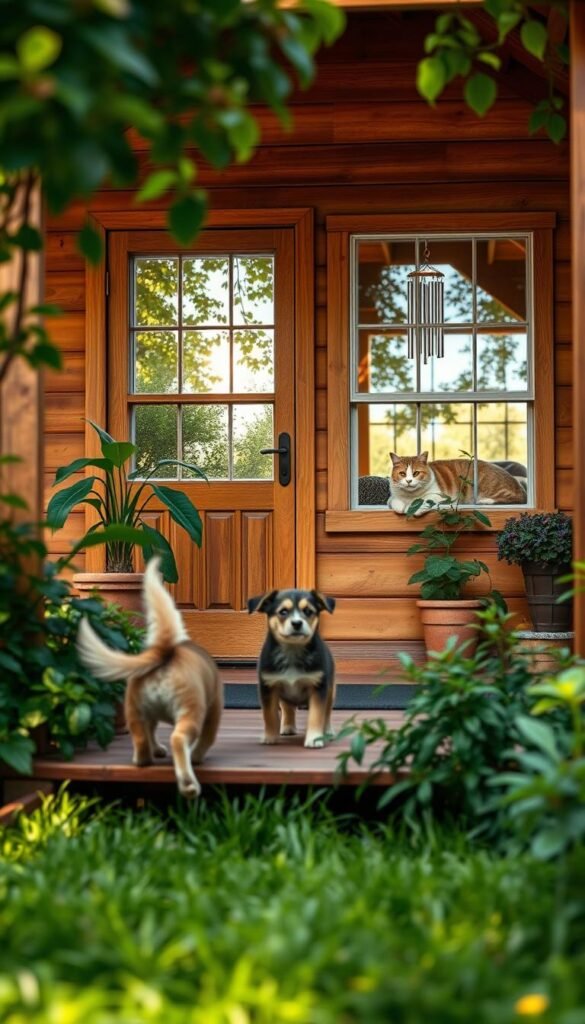
Benefits and Challenges of Downsizing
Small-space cohabitation amplifies the perks of pet ownership. Studies reveal:
- 45% higher oxytocin levels in owners sharing compact spaces with cats/dogs
- 30% faster stress reduction during shared activities in cozy environments
- Streamlined routines that prioritize playtime over possessions
Common hurdles include odor control in tight quarters and finding clever storage for leashes or litter boxes. Proper ventilation systems and wall-mounted organizers often solve these issues.
Understanding Pet Needs in Compact Spaces
Every species requires tailored solutions. Cats thrive with vertical climbing walls, while dogs need designated chew zones. Consider these factors:
- Noise sensitivity in shared sleeping areas
- Accessible outdoor pathways for bathroom breaks
- Non-slip flooring for senior animals
Regularly rotating toys and creating multi-use zones prevents boredom without cluttering your home. A fold-out feeding station doubles as workspace when not in use.
Choosing the Right Pet for Tiny Living
Selecting animal companions for limited square footage requires more than measuring paws and tails. While size plays a role, a pet’s personality and activity needs often determine their success in cozy environments. A Great Dane with couch-potato tendencies might outshine a hyperactive Jack Russell Terrier in spatial harmony.
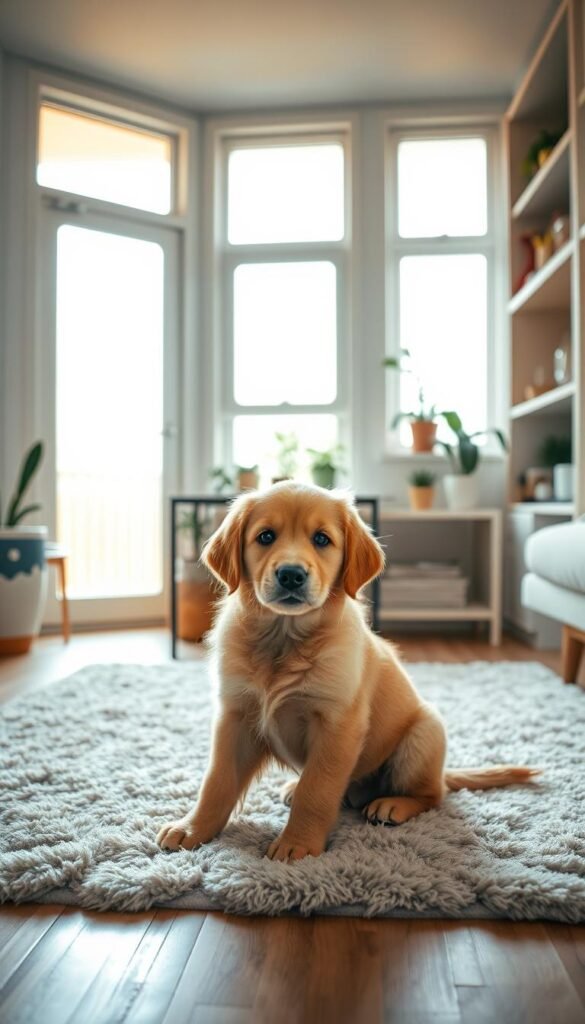
Assessing Temperament and Energy Levels
High-energy breeds like Border Collies or Bengal cats often struggle without expansive play areas. Look for animals content with short indoor games or window watching. Reptiles and senior animals frequently adapt better to calm routines than puppies or kittens needing constant engagement.
Aligning Habits With Your Routine
Busy professionals might prefer low-maintenance furry friends like fish or guinea pigs. Homebodies could bond with affectionate lap cats. Consider how often your lifestyle allows for walks, grooming sessions, or interactive play—essential factors for keeping compact quarters stress-free.
Research shows 68% of successful tiny home pet owners prioritize temperament over size. Calm dispositions and independent streaks often create better matches than physical dimensions alone. Always test how potential companions react to confined spaces before committing.
Do pets adapt well to tiny‑house living?
Compact homes challenge traditional pet care approaches but can foster stronger bonds through intentional design. Success hinges on recognizing animal instincts while maximizing every square foot. Focused attention to behavioral cues and environmental design makes cohabitation rewarding.
Key Considerations for Behavior and Well-being
Animal companions signal stress through pacing, excessive vocalization, or appetite changes. Consistent routines help establish security in tight quarters. Rotate puzzle feeders and scent games to engage natural hunting instincts without clutter.
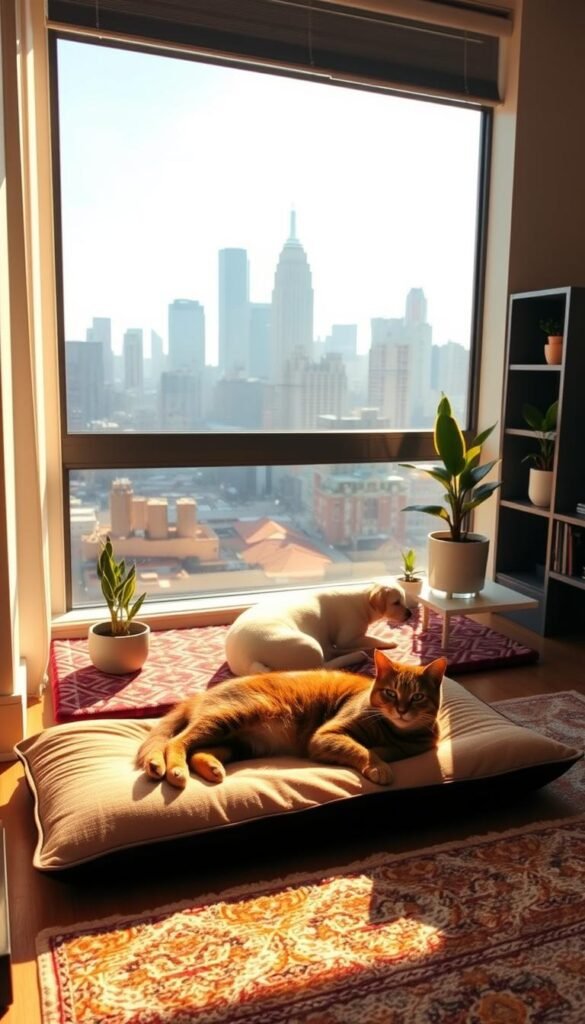
Designated retreat areas—like elevated perches or enclosed beds—give animals control over their environment. Non-slip flooring and sound-dampening materials reduce anxiety triggers. Weekly “enrichment audits” ensure your setup meets evolving needs.
Balancing Movement and Mental Engagement
Canine companions require structured outdoor time: two 30-minute walks minimum daily. Feline friends thrive with window perches and feather teaser sessions. For smaller animals:
- Rabbit playpens with digging boxes
- Hamster obstacle courses using PVC pipes
- Bird foraging toys with hidden treats
Supervised outdoor access prevents restlessness. Foldable pens allow safe sunshine time for rabbits and rodents. Always check local leash laws and predator risks before exploring natural spaces together.
Smart Design and Space-Saving Strategies for Pet-Friendly Tiny Homes
Transforming compact dwellings into pet havens demands clever spatial solutions. Multi-functional furniture bridges the gap between human needs and animal essentials, turning limitations into opportunities. By blending form and function, these designs maintain aesthetic appeal while serving practical purposes.
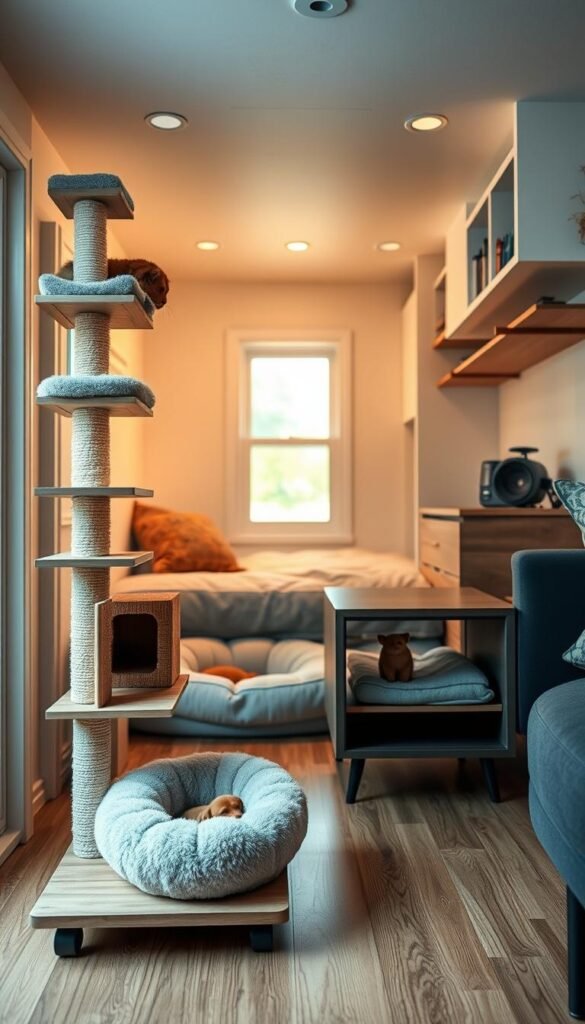
Innovative Multi-Functional Furniture Ideas
Modern tiny homes thrive on dual-purpose pieces. A coffee table with a built-in dog crate offers daytime naps and evening footrest functionality. Window seats conceal litter boxes behind removable panels, masking odors while maximizing natural light. Drawers beneath staircases become cozy sleeping nooks, eliminating the need for standalone pet beds.
Ottomans with hidden compartments store toys and leashes, doubling as guest seating. Fold-down feeding stations mounted on walls create mealtime zones that vanish when not in use. These space-savvy solutions keep floors clear and routines streamlined.
Maximizing Vertical Storage for Pet Supplies
Walls become treasure troves of organization in pet-friendly spaces. Magnetic strips hold grooming tools, while floating shelves display food containers as decor. Hanging mesh baskets corral plush toys, and ceiling-mounted pulley systems hoist bulkier items like carriers or folded playpens.
Over-door organizers with pockets store treats and medications vertically. Pegboards near entryways keep leashes accessible without clutter. By elevating storage solutions, you preserve precious floor space for play and movement—critical in compact environments.
Creating Comfortable and Secure Sleeping Spaces for Pets
Designing restful zones for animal companions in compact homes requires strategic thinking. Dedicated sleeping areas prevent territorial disputes while giving furry friends a sense of ownership over their environment. Built-in solutions prove most effective for balancing comfort and space efficiency.
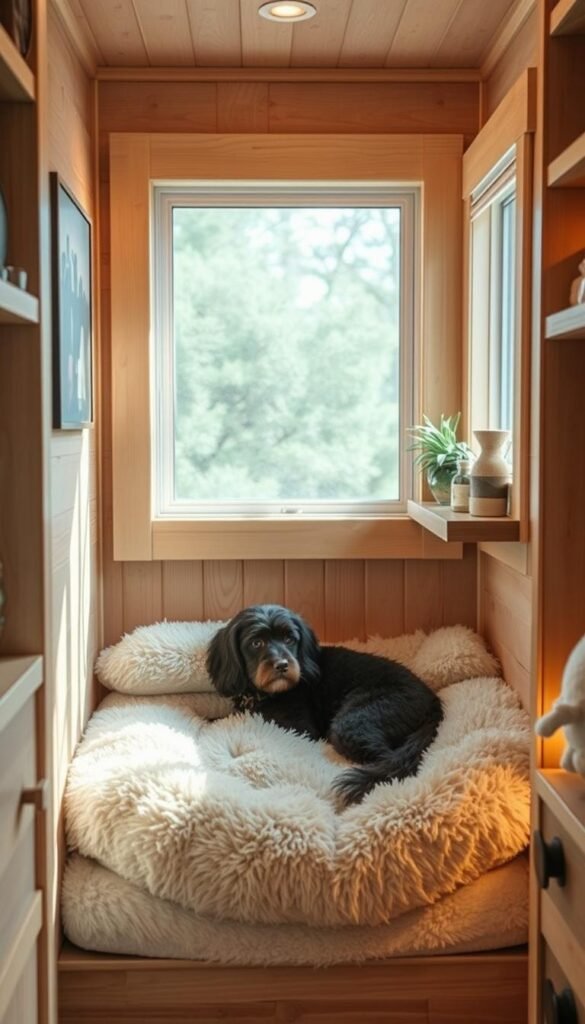
Indoor Sleeping Arrangements and Nook Ideas
Custom cabinetry transforms unused corners into cozy retreats. A bench seat with lift-up storage doubles as a bed for medium-sized dogs. Cats often prefer elevated cubbies near windows—install shelves with padded mats to create vertical lounging spaces.
Under-stair nooks work well for timid animals needing enclosed rooms. Line these areas with washable fabrics for easy cleaning. Fold-out platforms attached to walls save floor space during daytime hours.
Window-Mounted Beds and Elevated Perches
Feline companions thrive with suction-cup beds affixed to glass surfaces. These perches provide mental stimulation through outdoor views while keeping paws off countertops. For multi-cat households, staggered wall shelves create climbing paths that end in nap zones.
Consider these space-smart options:
- Retractable hammocks that tuck against walls
- Over-the-radiator platforms for winter warmth
- Magnetic food bowls that attach to metal bed frames
Rotating cushion placements weekly maintains novelty without adding clutter. Always position resting areas away from high-traffic zones to reduce stress triggers.
Smart Feeding and Hydration Solutions in Limited Spaces
Mealtime logistics shift dramatically in compact homes, where every inch counts. Creative food and water station designs prevent clutter while keeping essentials accessible. The right setup balances convenience with easy maintenance—a critical factor in tight quarters.
Innovative Feeding Station Setups
Hidden compartments reign supreme for space-conscious pet owners. Slide-out drawers built into kitchen kickboards tuck bowls away after meals, though regular cleaning prevents crumb buildup. Wall-mounted systems work well for cats—vertical water bottles paired with magnetic food dishes save floor real estate.
Space-Saving Water Bowl and Storage Solutions
Collapsible silicone bowls fold flat when unused, ideal for tiny homes with limited storage. Bathroom placements minimize spill concerns, while corner mats with raised edges contain messes. For multi-pet households, tiered stands stack bowls vertically without crowding walkways.
Remember: Elevated designs reduce neck strain, and non-skid bases prevent sliding during travel. Rotate water sources daily to encourage hydration—a wall fountain near a window adds entertainment value for curious companions.



